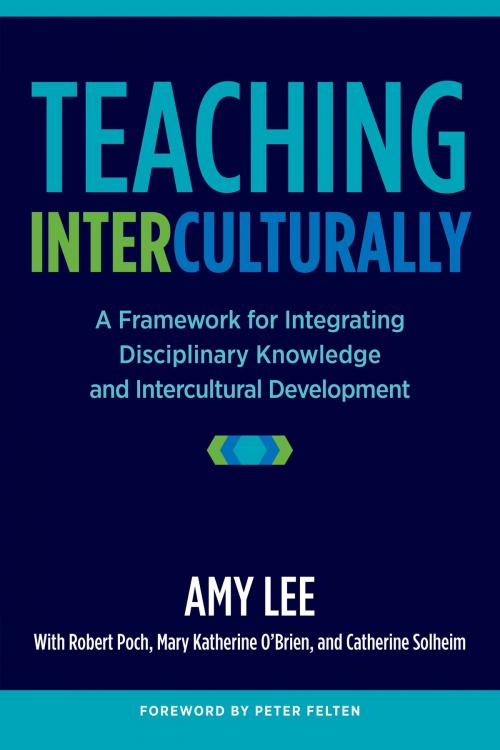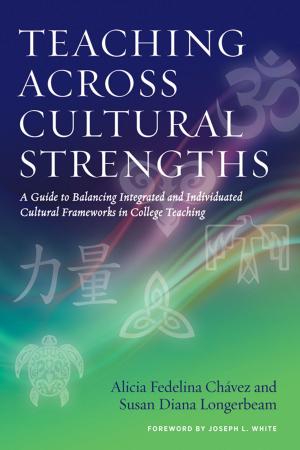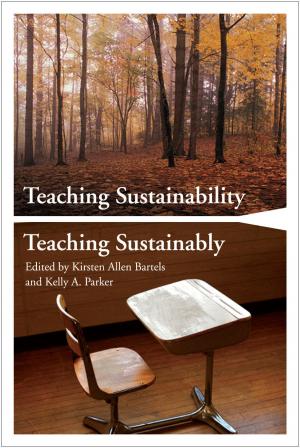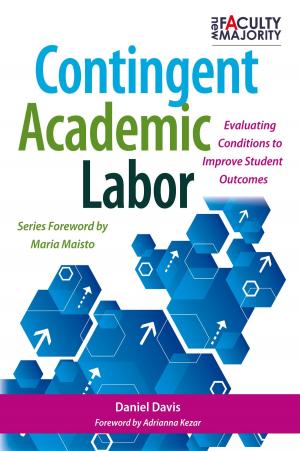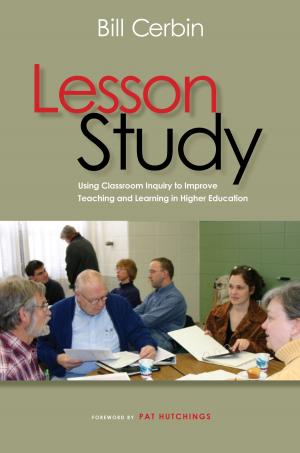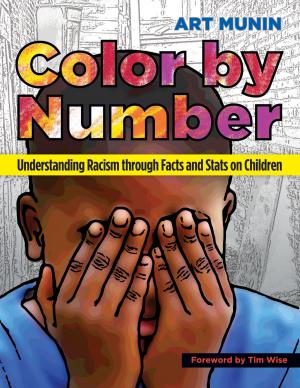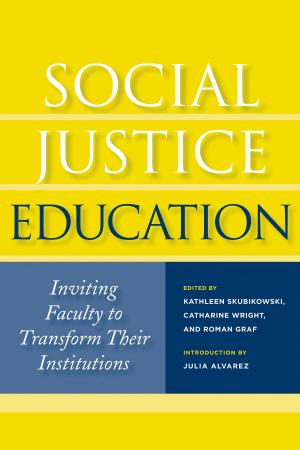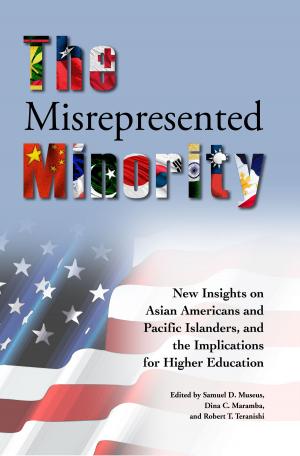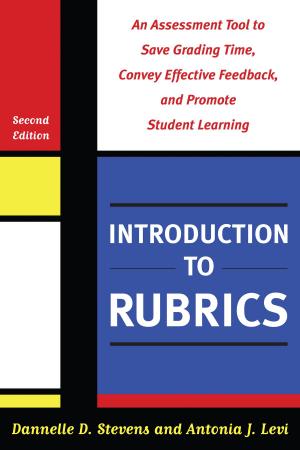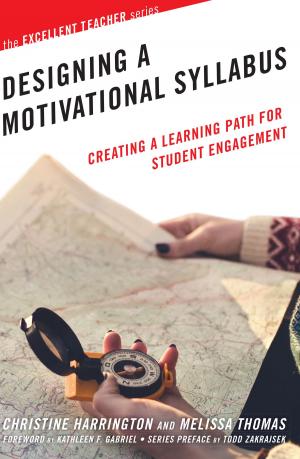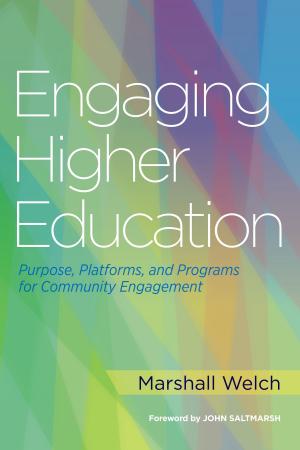Teaching Interculturally
A Framework for Integrating Disciplinary Knowledge and Intercultural Development
Nonfiction, Reference & Language, Education & Teaching, Higher Education| Author: | Amy Lee | ISBN: | 9781620363829 |
| Publisher: | Stylus Publishing | Publication: | August 31, 2017 |
| Imprint: | Stylus Publishing | Language: | English |
| Author: | Amy Lee |
| ISBN: | 9781620363829 |
| Publisher: | Stylus Publishing |
| Publication: | August 31, 2017 |
| Imprint: | Stylus Publishing |
| Language: | English |
How can I simultaneously support students' critical engagement with course content and develop their intercultural awareness?
Most faculty have multiple diversities present in any given classroom or academic program— whether from an influx of international students or an increase of students from low-income, first generation, and/or racial/ethnic minority populations— and are concerned about how to maintain a rigorous curriculum and ensure that all their students succeed, given disparate backgrounds and varying degrees of prior knowledge.
This book provides faculty and instructors with a theoretical foundation, practical tools, and an iterative and reflective process for designing and implementing an intercultural pedagogy. The authors bring to bear the expertise of their various disciplinary backgrounds to offer a responsive, integrative framework to develop and continually refine a pedagogy that both promotes deep disciplinary learning and supports intercultural outcomes for all students.
The authors offer a framework that is flexible enough to be responsive to the experience, environment, and particulars of a given teaching and learning situation. The text incorporates narrative text by the authors, as well as first-person reflections, classroom activities, and annotated assignments that illustrate the dynamic process of intention, experiment/implement, critique, and refinement that characterize pedagogy and intercultural interaction.
The authors bring to bear the expertise of their various disciplinary backgrounds, a deep knowledge of effective pedagogical practice, and their experience and grounding in intercultural practice: Amy in composition/writing studies, Mary Katherine in international education with rich experience as a faculty development trainer, and Bob and Catherine, respectively, an historian and a family scientist.
This book is intended both for individual reading as well as for collective study in learning communities.
Most faculty have multiple diversities present in any given classroom or academic program— whether from an influx of international students or an increase of students from low-income, first generation, and/or racial/ethnic minority populations— and are concerned about how to maintain a rigorous curriculum and ensure that all their students succeed, given disparate backgrounds and varying degrees of prior knowledge.
This book provides faculty and instructors with a theoretical foundation, practical tools, and an iterative and reflective process for designing and implementing an intercultural pedagogy. The authors bring to bear the expertise of their various disciplinary backgrounds to offer a responsive, integrative framework to develop and continually refine a pedagogy that both promotes deep disciplinary learning and supports intercultural outcomes for all students.
The authors offer a framework that is flexible enough to be responsive to the experience, environment, and particulars of a given teaching and learning situation. The text incorporates narrative text by the authors, as well as first-person reflections, classroom activities, and annotated assignments that illustrate the dynamic process of intention, experiment/implement, critique, and refinement that characterize pedagogy and intercultural interaction.
The authors bring to bear the expertise of their various disciplinary backgrounds, a deep knowledge of effective pedagogical practice, and their experience and grounding in intercultural practice: Amy in composition/writing studies, Mary Katherine in international education with rich experience as a faculty development trainer, and Bob and Catherine, respectively, an historian and a family scientist.
This book is intended both for individual reading as well as for collective study in learning communities.
How can I simultaneously support students' critical engagement with course content and develop their intercultural awareness?
Most faculty have multiple diversities present in any given classroom or academic program— whether from an influx of international students or an increase of students from low-income, first generation, and/or racial/ethnic minority populations— and are concerned about how to maintain a rigorous curriculum and ensure that all their students succeed, given disparate backgrounds and varying degrees of prior knowledge.
This book provides faculty and instructors with a theoretical foundation, practical tools, and an iterative and reflective process for designing and implementing an intercultural pedagogy. The authors bring to bear the expertise of their various disciplinary backgrounds to offer a responsive, integrative framework to develop and continually refine a pedagogy that both promotes deep disciplinary learning and supports intercultural outcomes for all students.
The authors offer a framework that is flexible enough to be responsive to the experience, environment, and particulars of a given teaching and learning situation. The text incorporates narrative text by the authors, as well as first-person reflections, classroom activities, and annotated assignments that illustrate the dynamic process of intention, experiment/implement, critique, and refinement that characterize pedagogy and intercultural interaction.
The authors bring to bear the expertise of their various disciplinary backgrounds, a deep knowledge of effective pedagogical practice, and their experience and grounding in intercultural practice: Amy in composition/writing studies, Mary Katherine in international education with rich experience as a faculty development trainer, and Bob and Catherine, respectively, an historian and a family scientist.
This book is intended both for individual reading as well as for collective study in learning communities.
Most faculty have multiple diversities present in any given classroom or academic program— whether from an influx of international students or an increase of students from low-income, first generation, and/or racial/ethnic minority populations— and are concerned about how to maintain a rigorous curriculum and ensure that all their students succeed, given disparate backgrounds and varying degrees of prior knowledge.
This book provides faculty and instructors with a theoretical foundation, practical tools, and an iterative and reflective process for designing and implementing an intercultural pedagogy. The authors bring to bear the expertise of their various disciplinary backgrounds to offer a responsive, integrative framework to develop and continually refine a pedagogy that both promotes deep disciplinary learning and supports intercultural outcomes for all students.
The authors offer a framework that is flexible enough to be responsive to the experience, environment, and particulars of a given teaching and learning situation. The text incorporates narrative text by the authors, as well as first-person reflections, classroom activities, and annotated assignments that illustrate the dynamic process of intention, experiment/implement, critique, and refinement that characterize pedagogy and intercultural interaction.
The authors bring to bear the expertise of their various disciplinary backgrounds, a deep knowledge of effective pedagogical practice, and their experience and grounding in intercultural practice: Amy in composition/writing studies, Mary Katherine in international education with rich experience as a faculty development trainer, and Bob and Catherine, respectively, an historian and a family scientist.
This book is intended both for individual reading as well as for collective study in learning communities.
